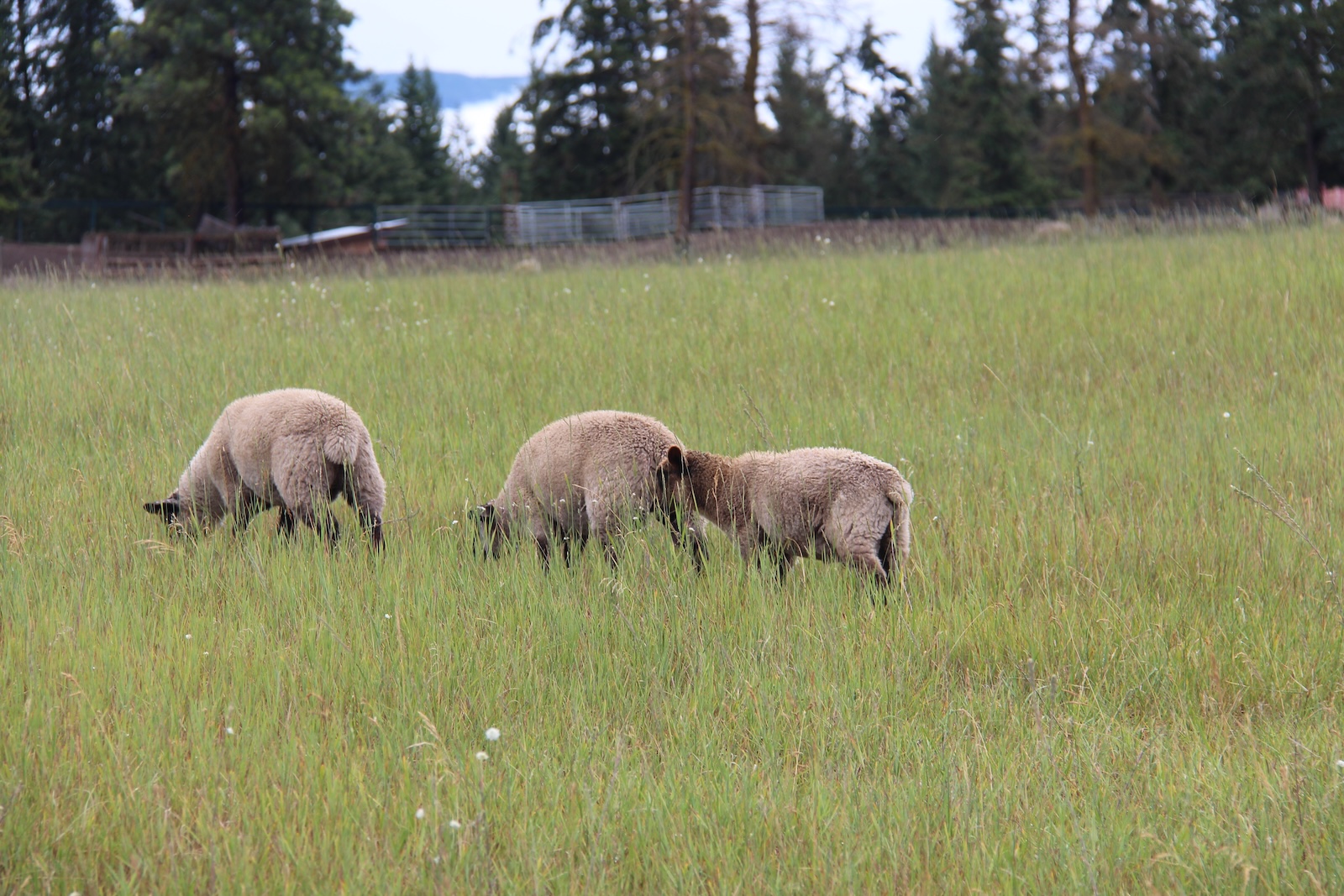An article by Mary Trainer, MGiT with OMG
I’d never heard about wool pellets for gardening until a brief news item about them in the Globe and Mail last spring caught my eye. I quickly got over feeling ‘sheepish’ about my ignorance.
Wool pellets in the garden
It turns out that gardeners have good reason to get excited about this relatively new product. Pellets are naturally high in nitrogen and carbon, and they also contain calcium, iron, potassium, sulphur, magnesium and numerous trace elements.
The pellets hold 25-30% of their weight in moisture, so when they contract and expand they aerate the soil and add porosity for roots.
Sourcing wool pellets in the Okanagan
The Okanagan has its very own manufacturer. Since 2022, Waste Not Wool in Lumby has been collecting waste wool from valley shepherds to create these slow-release organic fertilizers and soil amendments that are gaining in popularity.
In addition to wool, the pellets contain manure and organic matter, such as straw. They’re made by shredding raw wool and pushing it through a special machine at high heat. (Any seeds that may be in the wool are destroyed in this process.)
Using wool pellets in the garden
The pellets last an entire growing season. They take about six-to-nine months to break down. Use the pellets in the spring before you plant, or in the fall to amend the soil for the next growing season.
Here’s how you might use them, as suggested by Waste Not Wool:
- If you’re creating your own hanging baskets, push in 1-1.5 cups of pellets. (And when done for the season, empty the soil back into your garden.)
- For houseplants in 6-8” pots, push 1/8 c. into the soil
- Before transplanting or seeding into raised beds, scratch in about 1 kg of pellets, enough to cover 20 square feet.
Pellets also make an excellent mulch.
Effectiveness as a soil amendment
How effective are they? Linda Petite, head gardener at the Horticulture Centre of the Pacific in Victoria, B.C., used the pellets in a trial project last year.
“Our test plot was planting an area with cucumber plants, half had pellets and half didn’t,” she reports. “The plants with the pellets had better growth and produced more cucumbers. We also had wool from a local farmer and we spread that down around the base of certain plants. That improved both growth and water retention and breaks down into the soil over time.”
Apparently wool repels slugs, welcome news for Lower Mainland gardeners, but not such a problem in the Okanagan.
More about wool pellets
Using pellets is another desirable way to recycle wool that would otherwise end up in the landfill or burn pile.
Wool pellets are sold in 500 gm, 1 and 2 kilo bags at select stores in the north and central Okanagan (hopefully soon in the south), and online. For more information about Waste Not Wool, visit wastenotwool.com.
